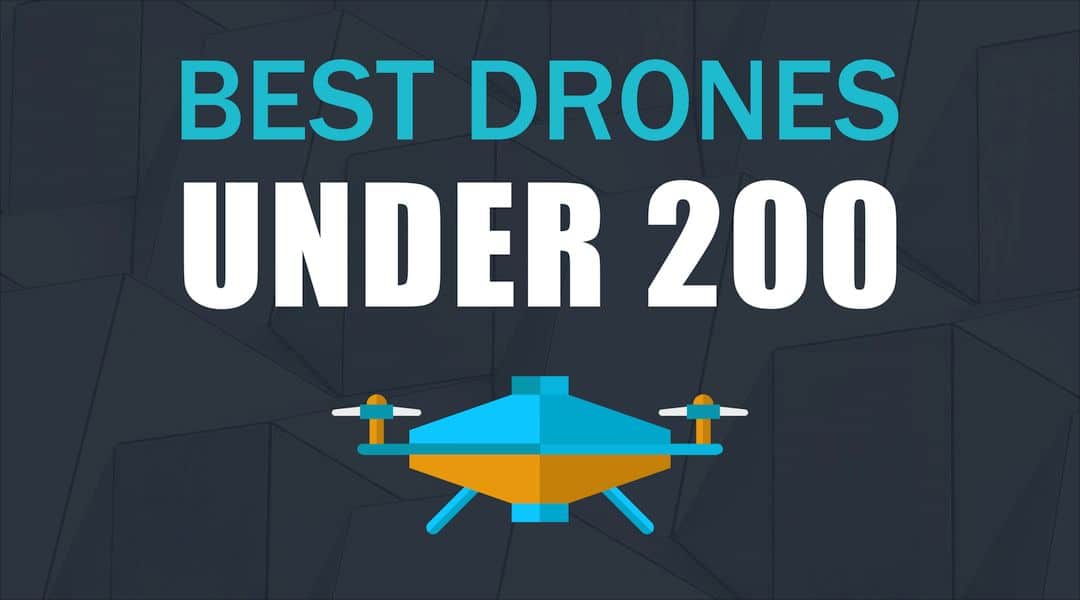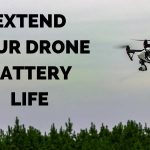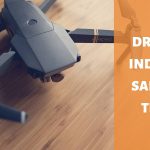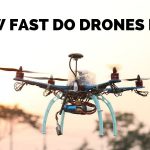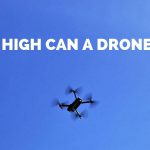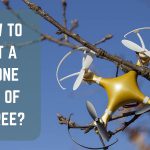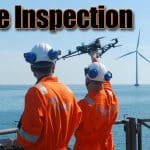One of the key specs to consider while buying a drone is flight time. You don’t want to have your flying cut short by a low battery warning. Although buying spare batteries may help you get your drone back in flight when one is drained, it is tiresome having to land and replace the battery every few minutes. So how long can a drone fly?
Drone Flight Time
A consumer drone can fly for 15-30 minutes. Consumer drones are those you can buy and use. They are currently the most popular drones. The flight time range includes most of the drones you can find on the market today. It does not include military drones which have been in existence for longer and can fly for much longer with some flying for up to 24hours straight. The focus here is on consumer drones which are available for you today.
Although the average flight time is between 15-30 minutes, the flight time is very varied. It is not only different from brand to brand but also from one make to another within the brand. Some drones can fly for longer than the above range like the DJI Mavic 2 Zoom that can fly for 31 minutes. Others will fly for as short as 5minutes, for example, entry-level drones. Why the huge difference? What determines how long a drone can fly, and how do you get the best value for your money in terms of flight time?
1. Drone Category
A key determinant of the drone flight time is the drone category, which bases on drone performance. The flight times for each category are as follows:
- Beginner drones: 5-10 minutes
- Mid-range drones: 15-20 minutes
- High-end drones: 20-30 minutes
Beginner drones are entry level UAVs that are best for those who want to buy their first drone mainly for fun. They are referred to as toy drones because of their low performance and flight time. A good example is Protensic A20 with a flight time of 10 minutes.
Mid-range drones are the most popular as they balance performance with affordability. They are perfect for virtually any activity. The Blackhawk with a 15-minute flight time is one of the best options here.
If you want to go big, then the high-end drones like the DJI Mavic 2 Zoom are your best choice. They have the best performance in terms of flight time, stability, durability, cameras, and other features. Industry leaders fall into this category.
2. Source of Power
The primary determinant to how long a drone can fly is the power source. The stronger the source of power, the more the drone can stay in the air. There have been a lot of technological advancements when it comes to powering the drone that has led to better flight times. Before looking at the most common power source of drones, here is a look at game-changing power sources for drones. Note that most of these technologies are still in testing or limited to the developers alone. They are not commercially available in the drones you can buy in the stores.
Hybrid Fuel-Electric Engines
The design allows for the recharging of the batteries by combustion of fuel. A drone will, therefore, fly for longer as it has access to more power until the fuel runs out. The Hybrix.20 drone by Quarternium is an example and can fly for 4 hours 4 minutes.
Diesel Power
A drone can fly longer on diesel. The Vanilla Aircraft VA001, for instance, flew for five days straight and still had three days worth of fuel left.
Solar Power
A drone can fly for a year when it is powered by solar power. The technology has been shown to work by Airbus with their Zephyr S drone and BAE Systems with their PHASA-35 drone.
Plugged in the Ground
DroneCatcher has its drones plugged into a power source on the ground through a long connecting cable. The drones detach when they have to address a problem which is usually catching stray drones so that they don’t get to the airspace and cause accidents.
Combustion Engine
The final innovation in the list of game changers is the use of a combustion engine, which is what the Yeair! drone is bringing to the market soon. The drone can fly for 60 minutes straight.
Batteries
Although the above options offer impressive flight times more than the average 30 minutes tops, they are still not available for you. Batteries are the commonest power sources used in drones today and determine how long a drone can fly. It is simple; a stronger battery means more flight time.
The best battery for a drone is one that can store more energy per unit mass. That is because you want the battery to be as strong as possible while being as light as possible. Lithium, being the lightest metal, is thus used. You may notice LI on batteries, which stands for lithium. LiPO stands for Lithium polymer, which even makes the battery lighter and thus ability to store more energy without compromising on weight.
Battery life or how long the drone will fly after you fully charge it will depend on:
- Type of battery where lithium batteries store more energy
- The capacity of the battery
- Deep discharge abilities of the battery where the deeper it can discharge, the longer you can fly
- The power consumption rate of the drone
Battery Lifetime
A new battery always means you get the maximum flight time possible. However, the battery deteriorates over time, and you will get less and less flight time. It will get to a point where it becomes unusable which is after about 500-1200 cycles. It may be shorter if you subject it to anything that can damage it.
You can do a number of things to extend the battery life of your drone:
- Always store the battery and the drone in a cool, dry place
- Avoid charging when it is still hot immediately after use
- Charge the battery to full capacity (100%) before flying
- Do not overcharge
- Never drain your battery fully
- Avoid aggressive flying
3. Drone Weight
Unlike fixed-wing drones, quadcopters rely on the propellers to stay in the air besides moving horizontally. That means that the heavier the drone, the more the energy spent on keeping it in the air which shortens the flight time. Heavy drones thus have shorter flight times unless powerful batteries power them. Lighter ones can fly for longer on the same amount of power. You will, therefore, find most high-end drones weighing so little.
You can also increase the flight time of your drone by reducing its size. Remember how race cars are stripped of the parts that are not essential? You can do the same with your drone by removing what you don’t need on the flight, for instance, propeller guards, lenses and other parts.
4. Propeller and Motor Type
The propeller configuration and motor strength determine how fast the drone runs through the battery on the drone. Propellers with a larger surface area and angle of attack are more energy efficient and will allow the drone to fly for longer. Drones with the most extended flight times have their propellers made with attention to detail in those two aspects.
A more powerful motor enables a drone to fly fast. However, it consumes more power and thus reduces how long a drone can fly. Racing drones are an example here with impressive speeds of up to 120mph but limited flight times of about 5 minutes.
5. Mode of Flight
How you fly a drone can determine how long it will last in the air. Hovering requires the least energy and therefore will keep your drone in the air for a longer time, usually an extra 10 minutes for some drones. A stable flight too saves on energy, for instance when you are filming.
Sport mode, on the other hand, results in less flight time as it is more tasking on the battery. Aggressive flying where you do flips, spins and turns will drain your battery faster and therefore lead to less flight time. It also impacts on the overall lifespan of your battery.
6. Flight Conditions
The maximum flight time you see on drones in the stores may actually not be what you will achieve while flying the drone. Your flight conditions have a considerable role to play when it comes to how long the drone can fly. When you fly out in the open, your
drone has to struggle against the resistance from wind, snow, humid air, or even rain.
You will, therefore, need to ensure the weather is clear if you want to get longer flight time. Rain and snow may even damage your drone if it is not waterproof. It there is wind, try flying in its direction to save on power.
Best Drones in Flight Time
- DJI Mavic 2 Zoom – 31 mins
- DJI Phantom 4 Pro – 30 mins
- Blade Chrome 4K – 30 mins
- DJI Mavic Pro – 27 mins
- Trexxas Aton Plus – 25 mins
- Yuneec Typhoon H Pro – 25 mins
- Yuneec Q500+ – 25 mins
- DJI Phantom 3 Standard – 25 mins
- Parrot Bebop 2 – 25 mins
- Upair One – 18 mins
How to Fly Your Drone Longer
- Buy a more powerful spare battery
- Reduce the weight of your drone by leaving only essentials on-board
- Get propellers that have better configuration
- Avoid flying aggressively
- Choose the right weather conditions
How Long Can a Drone Fly Conclusion
A drone can fly for about 15-30 minutes on average for most of the popular drones available. The flight time, however, varies from one drone to another depending on the power source, weight, propeller and motor type, mode of flight, and flight conditions. Longer flight time means better results for commercial drones or more fun if you are just in for the First Person View thrill.
References




